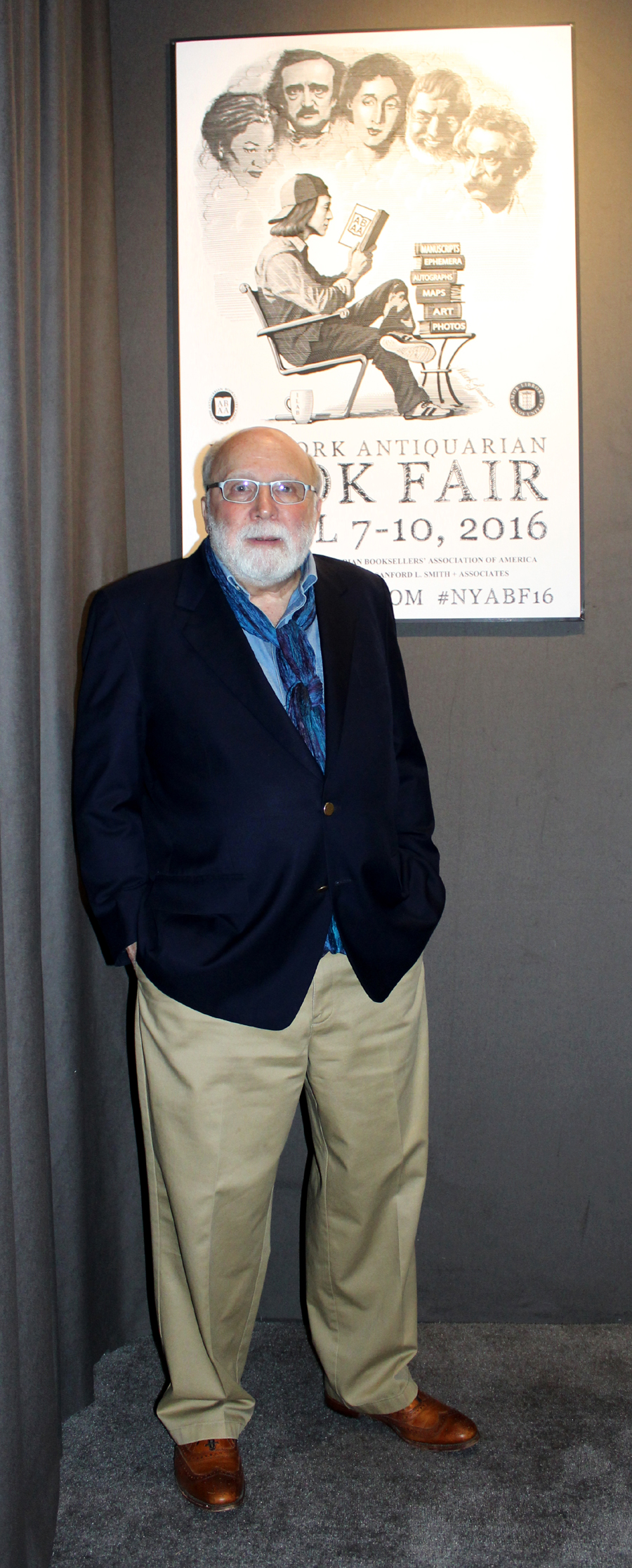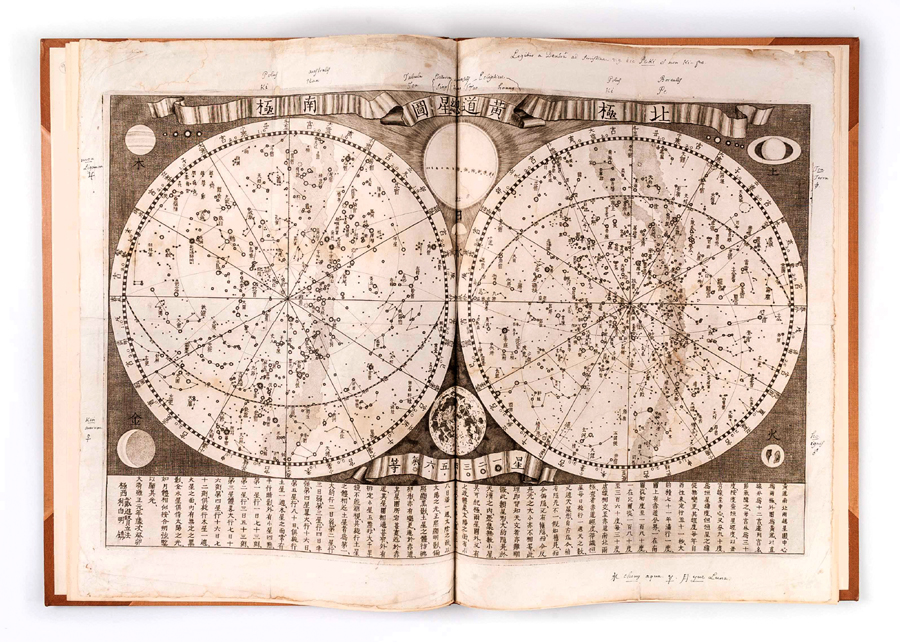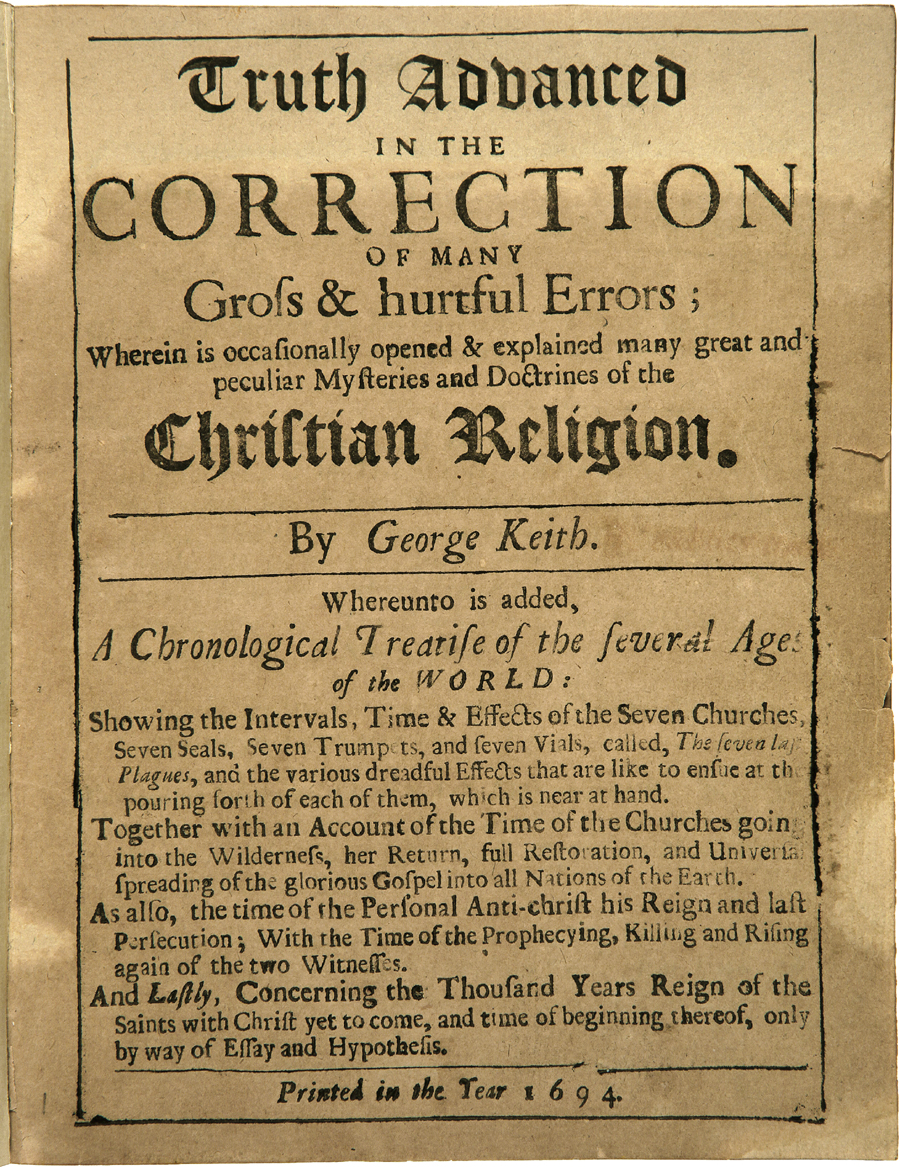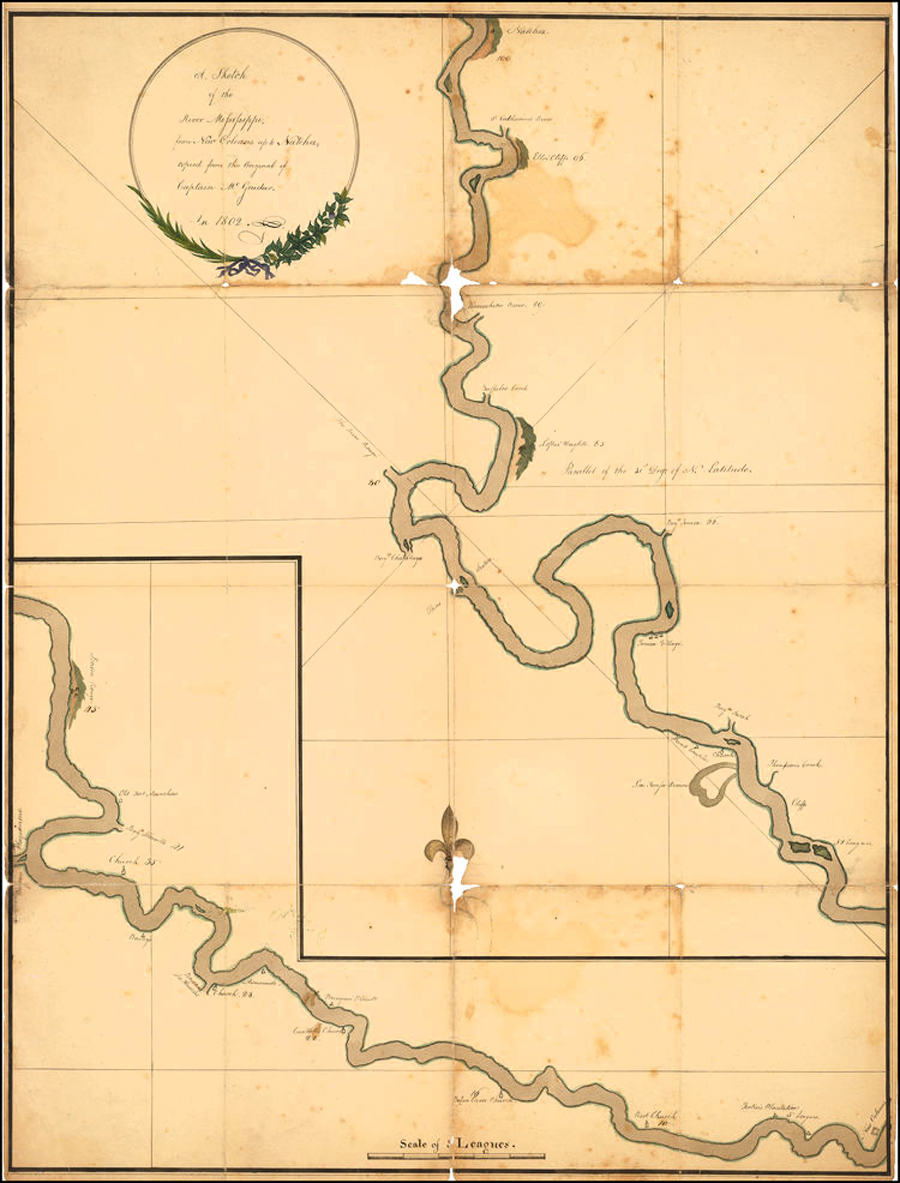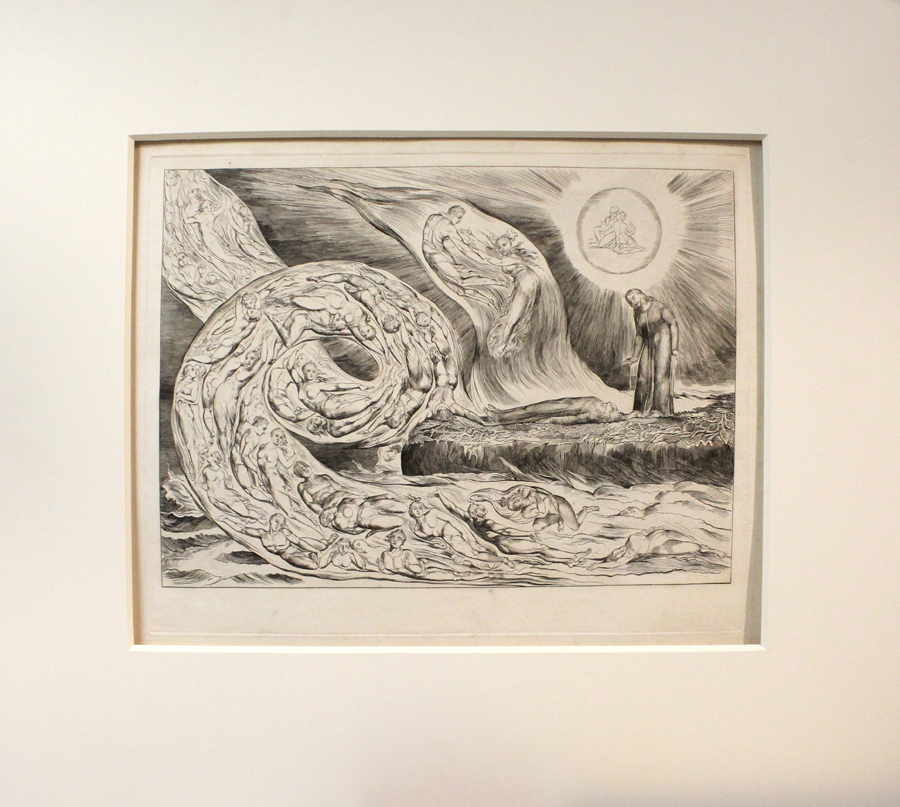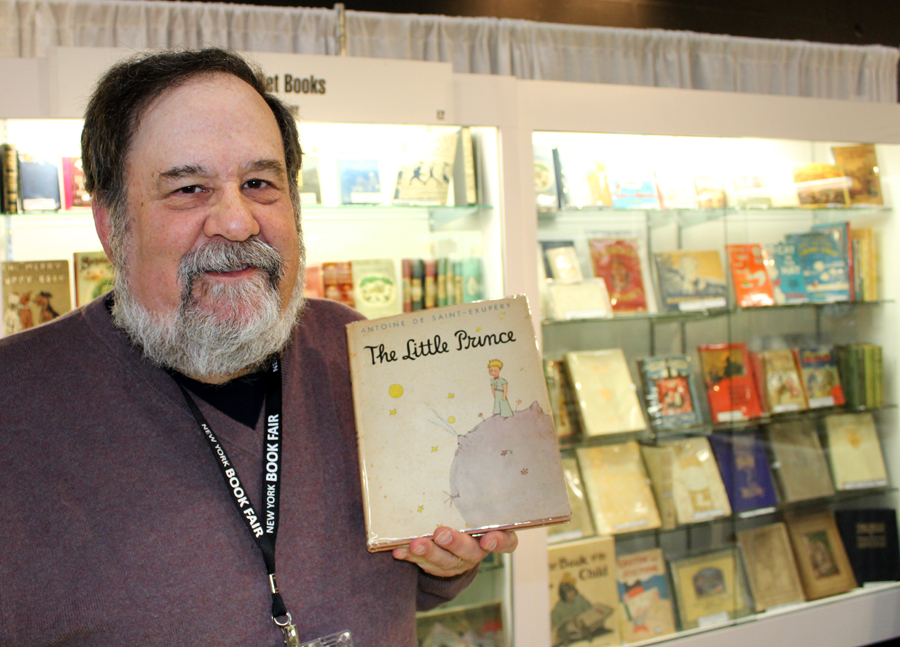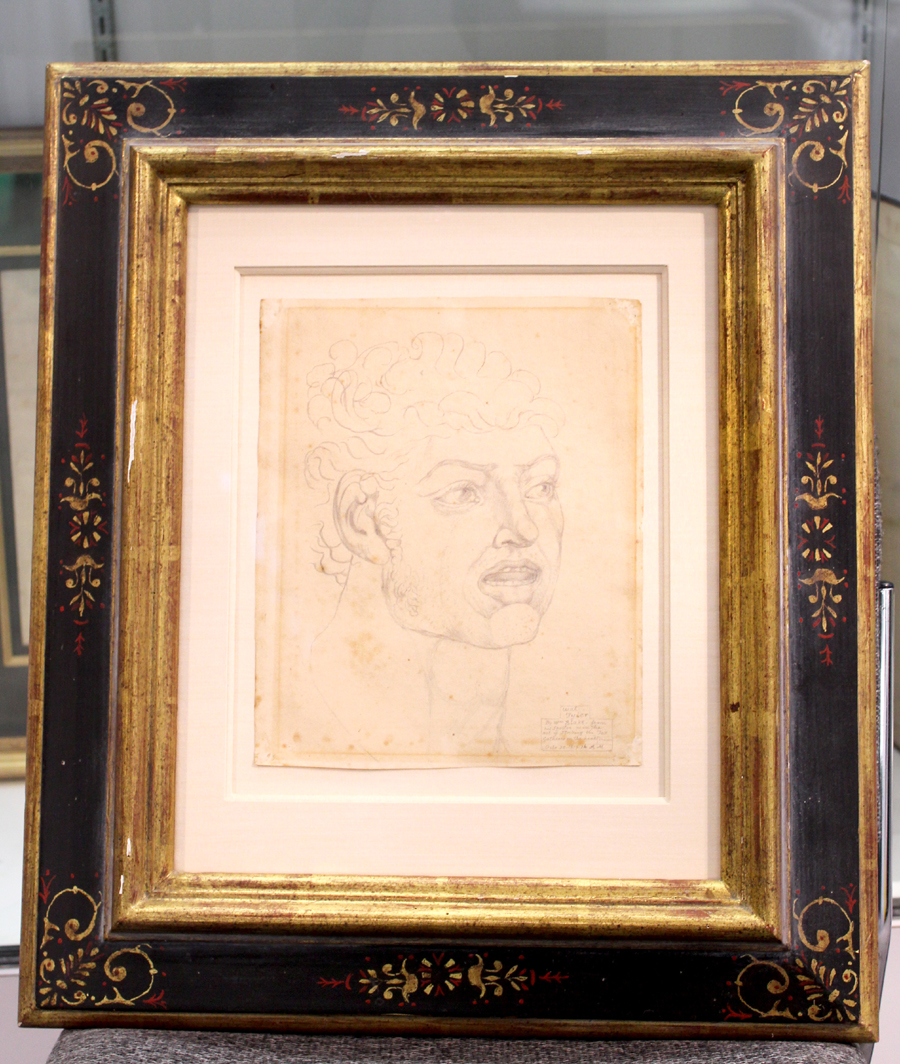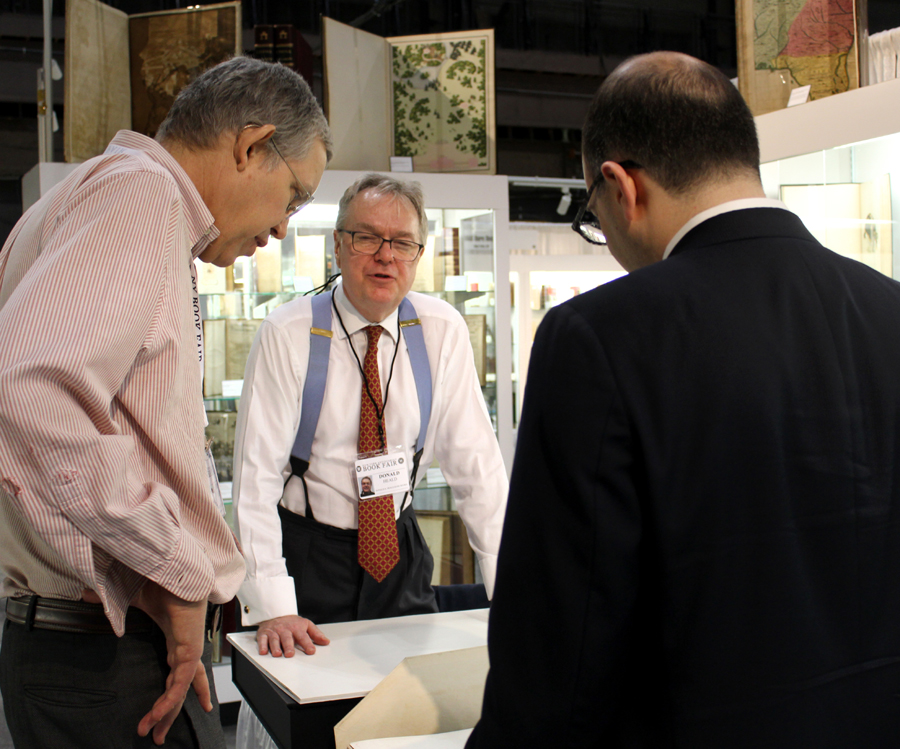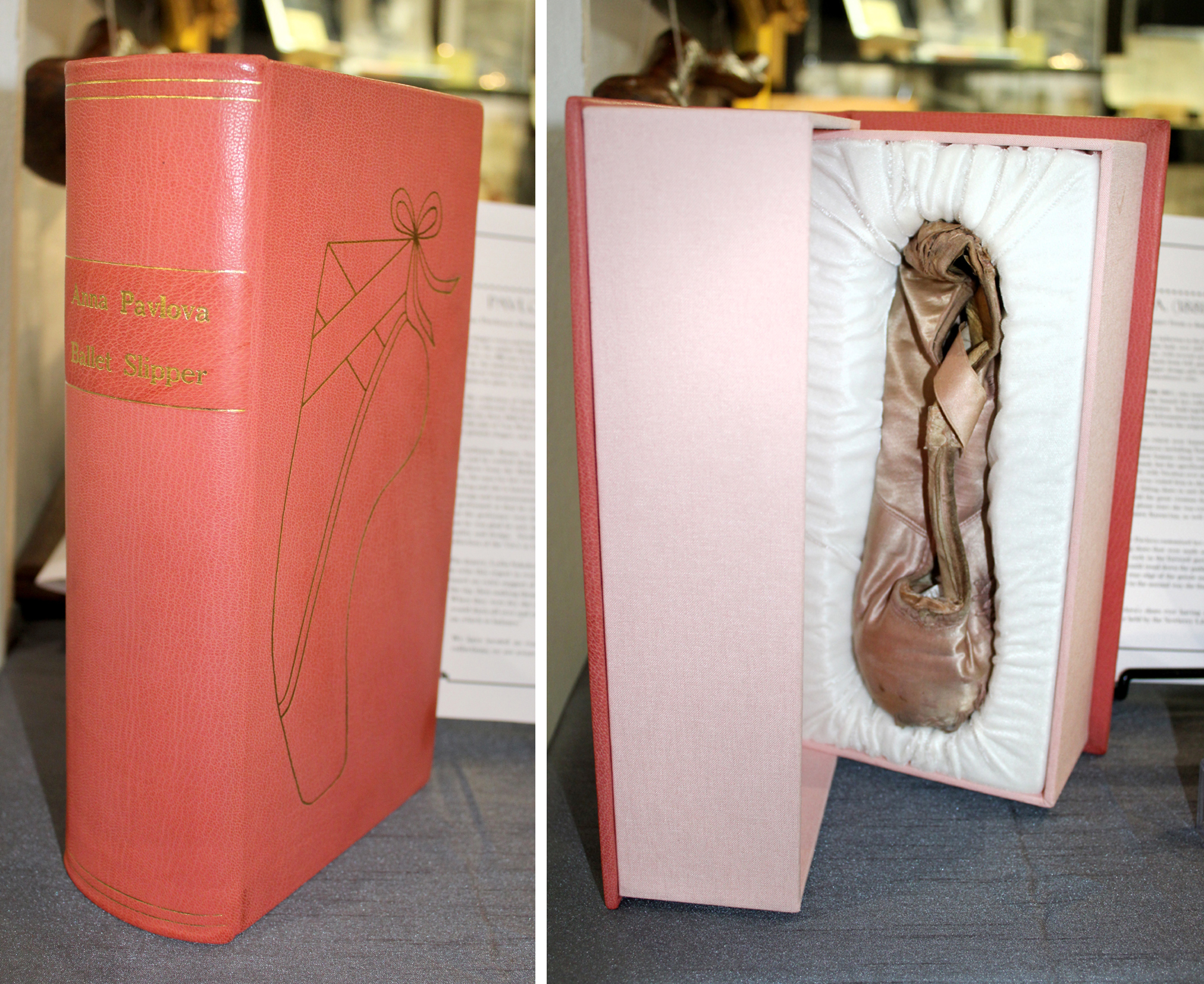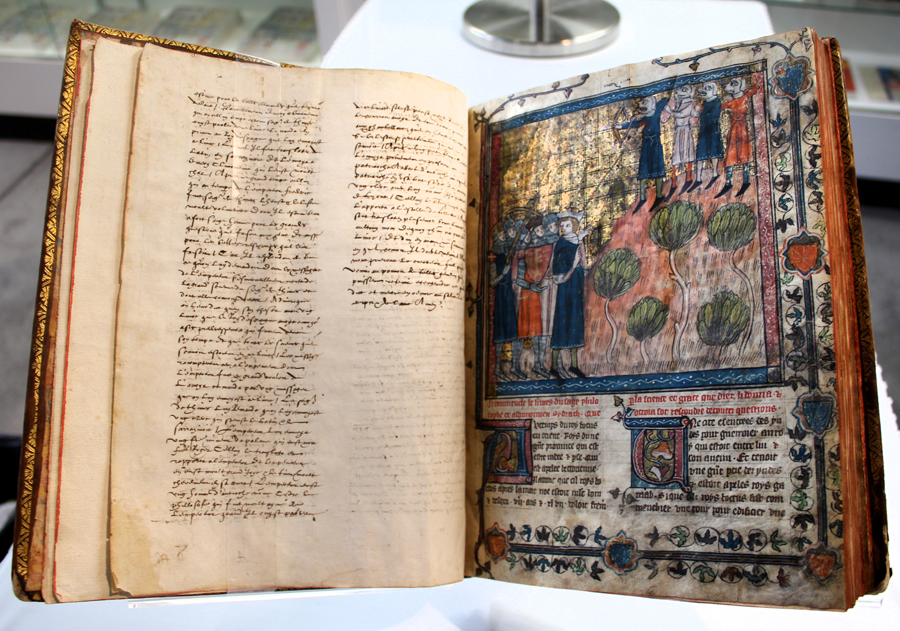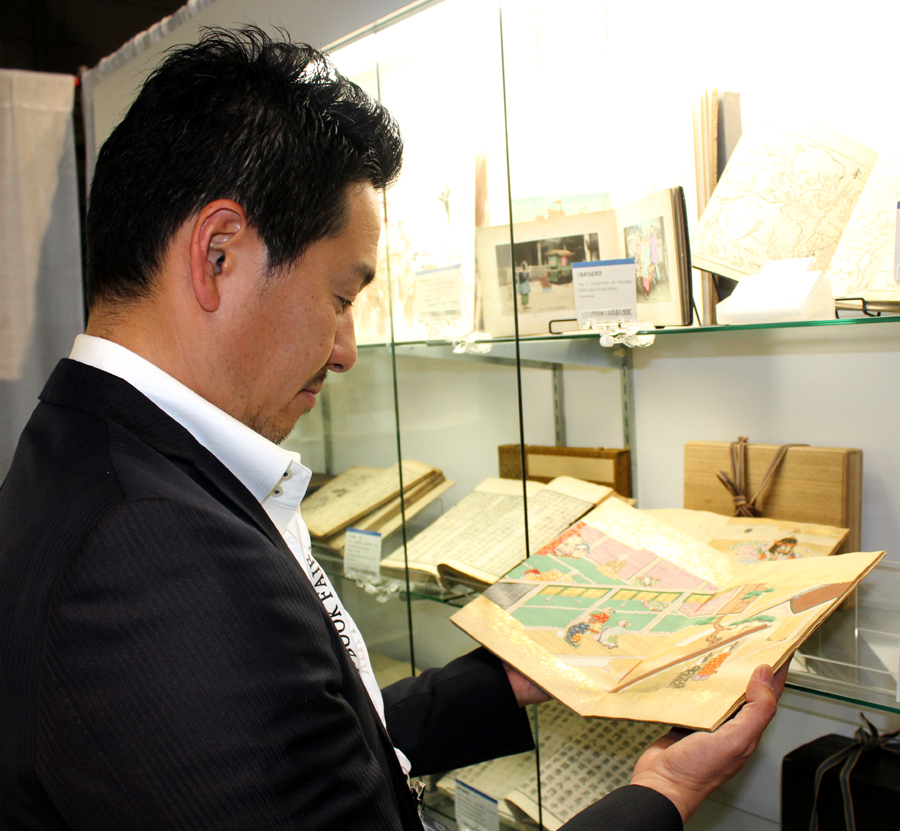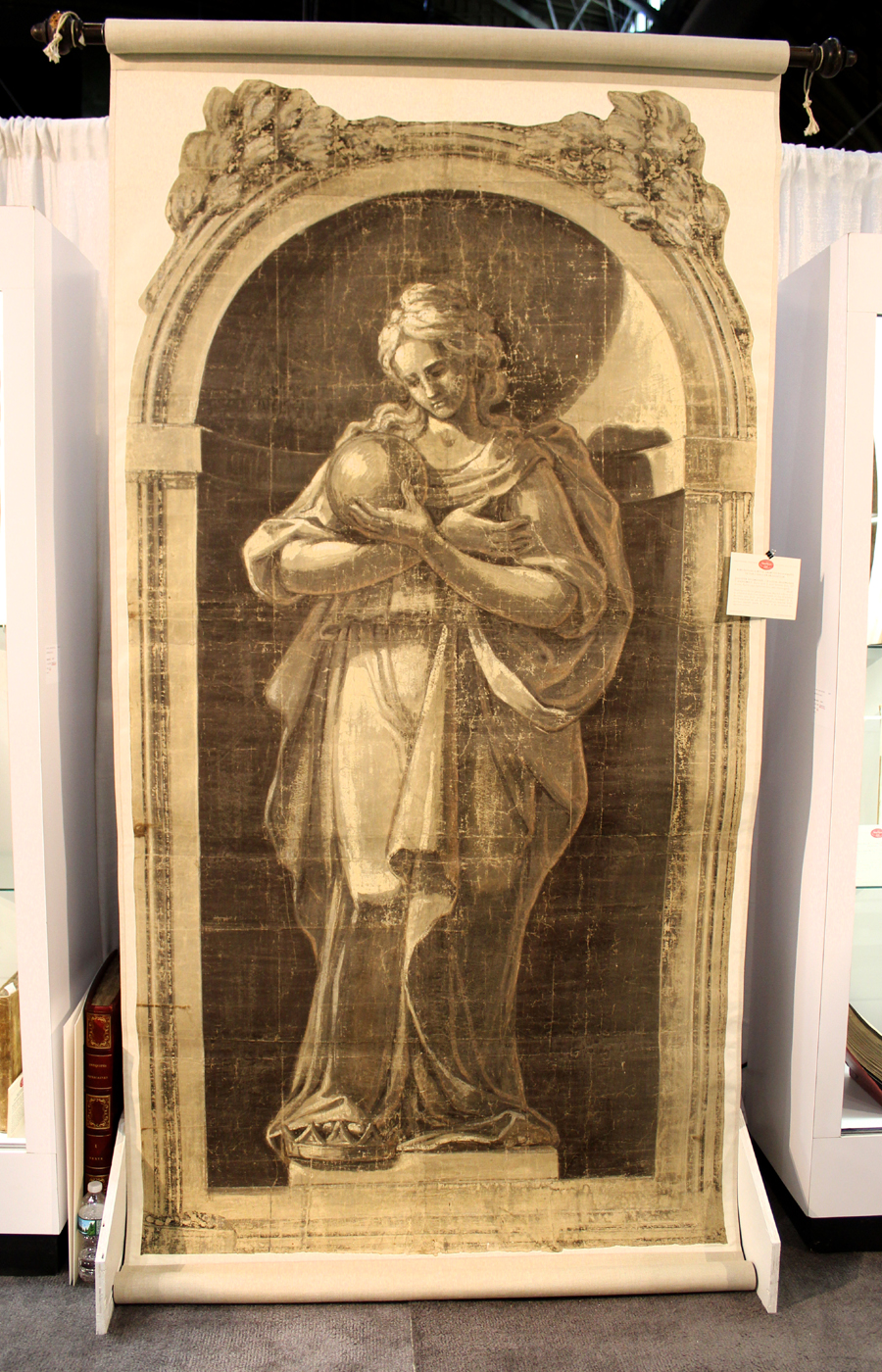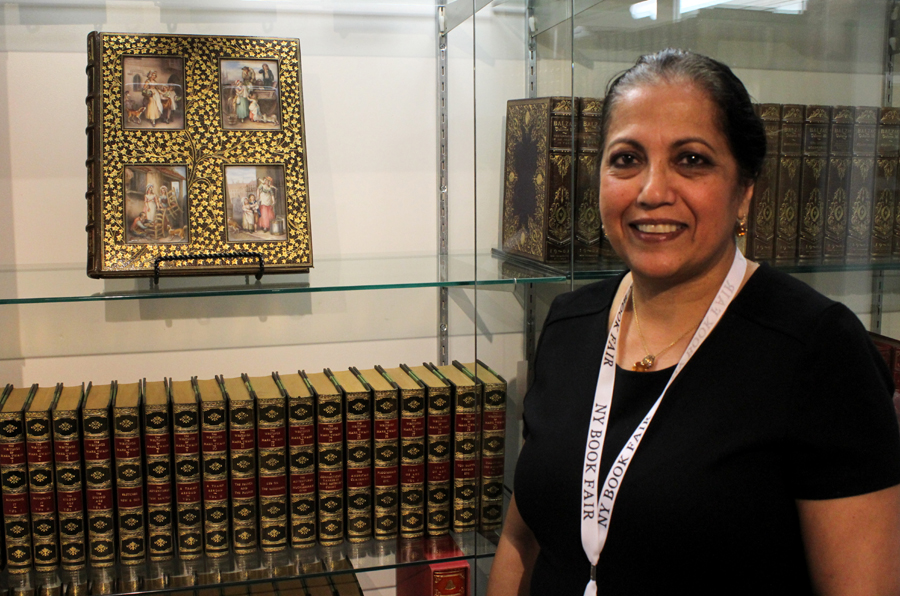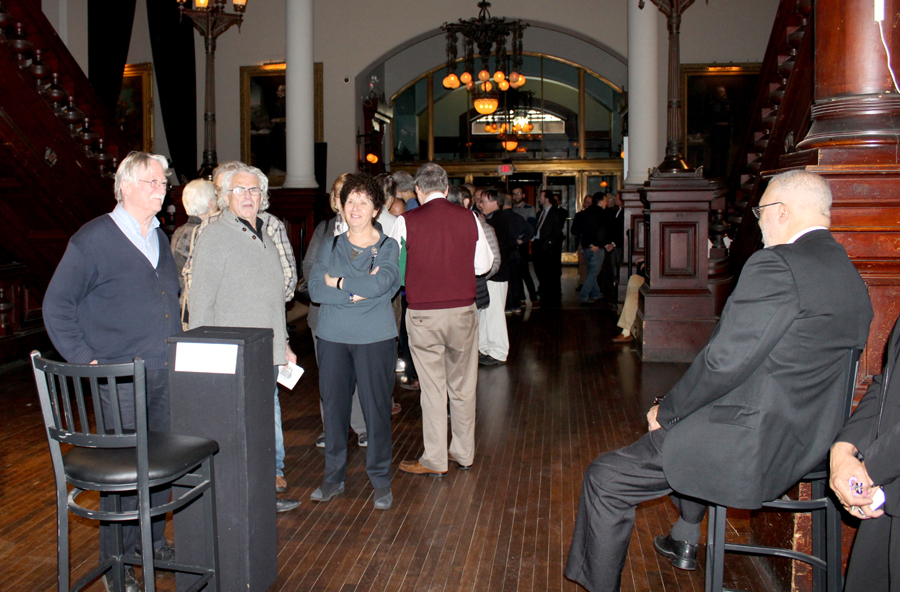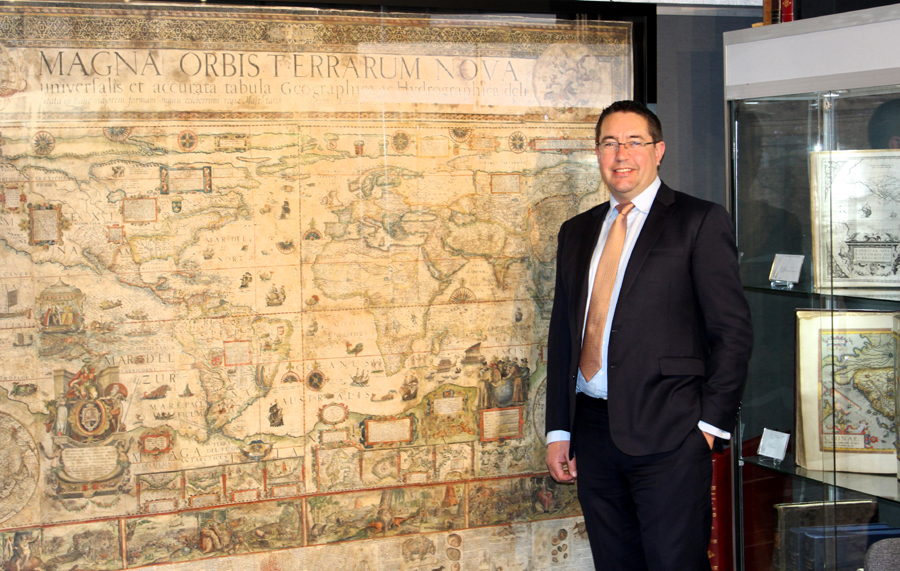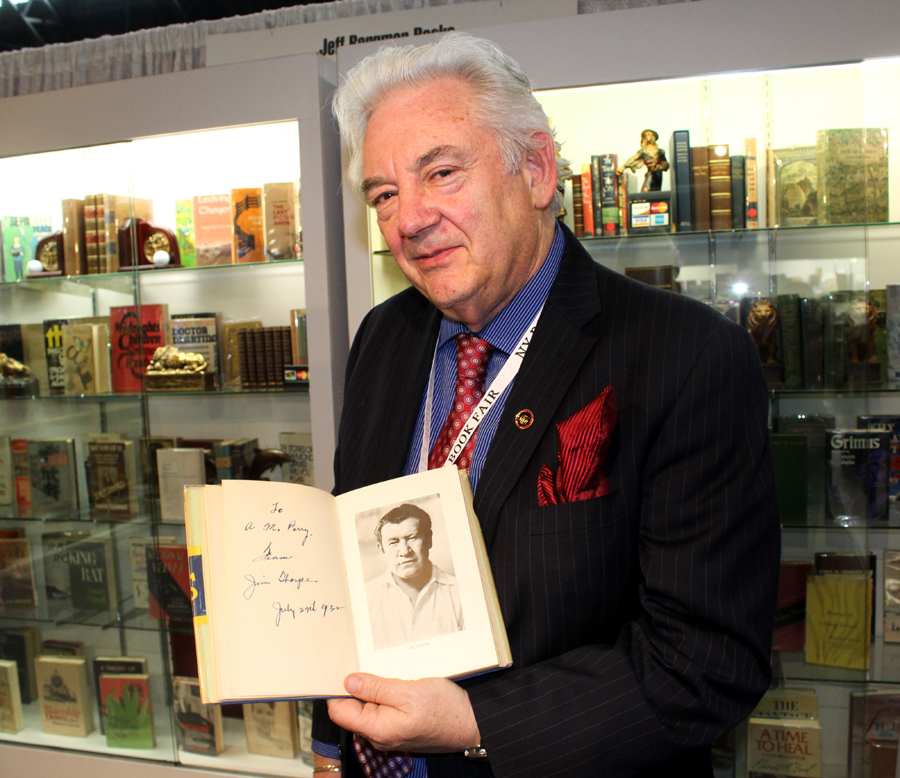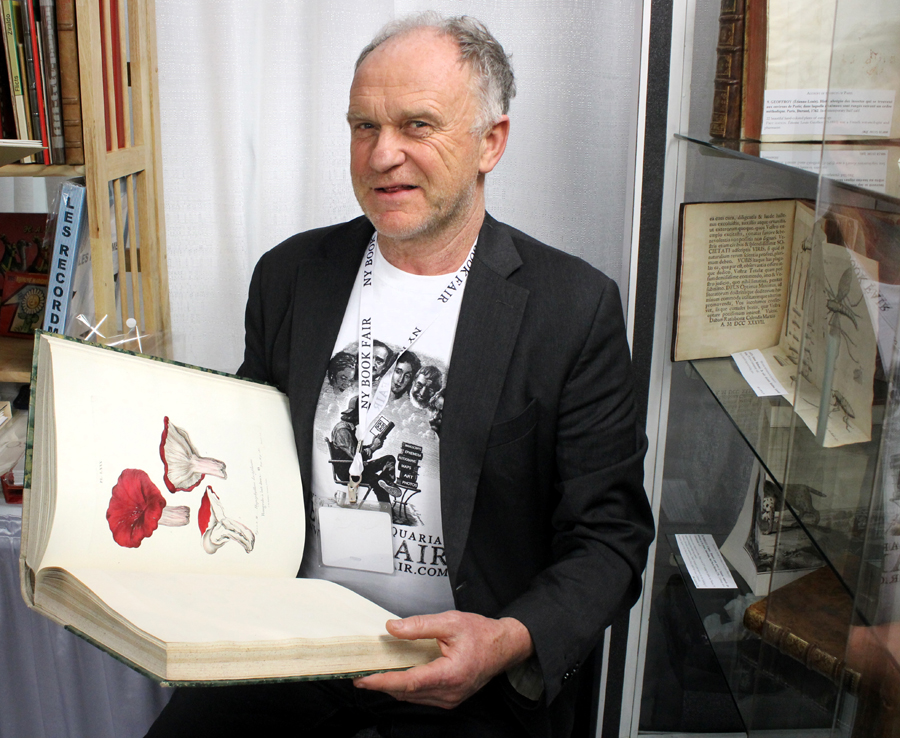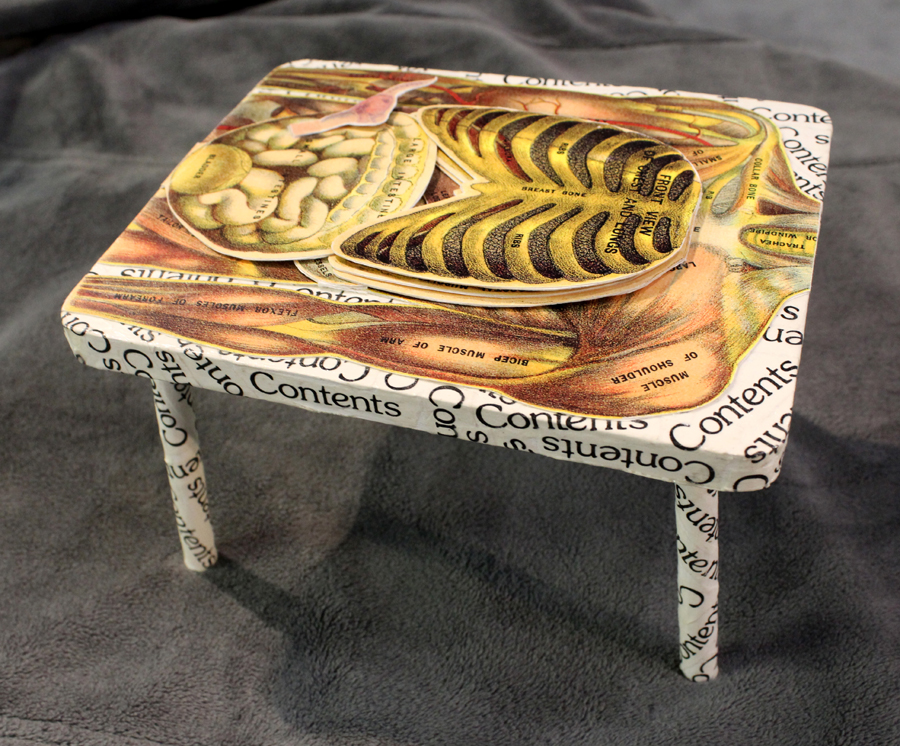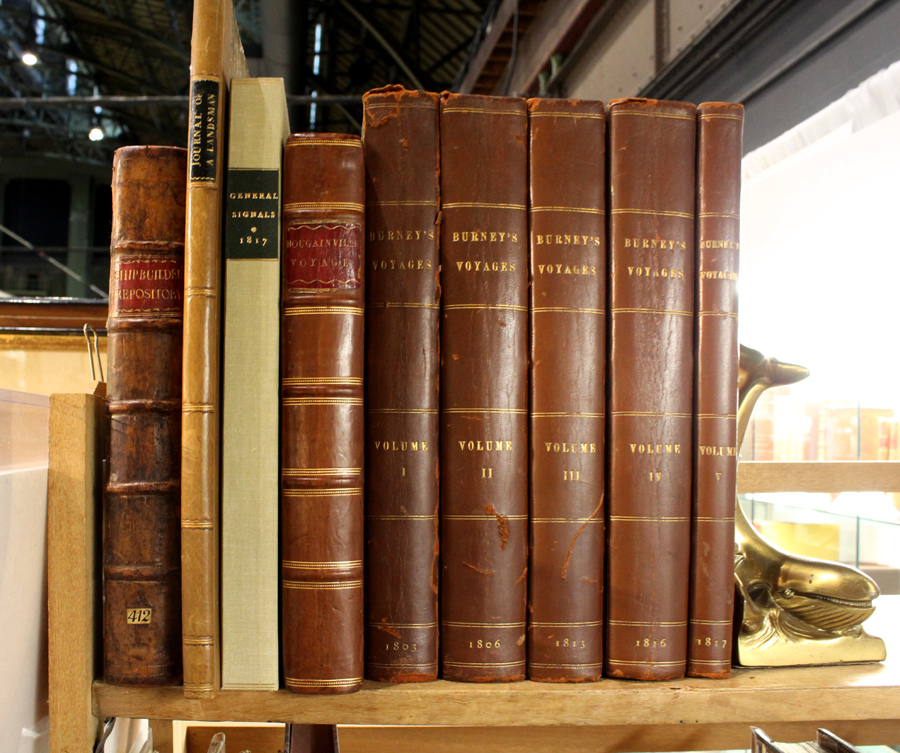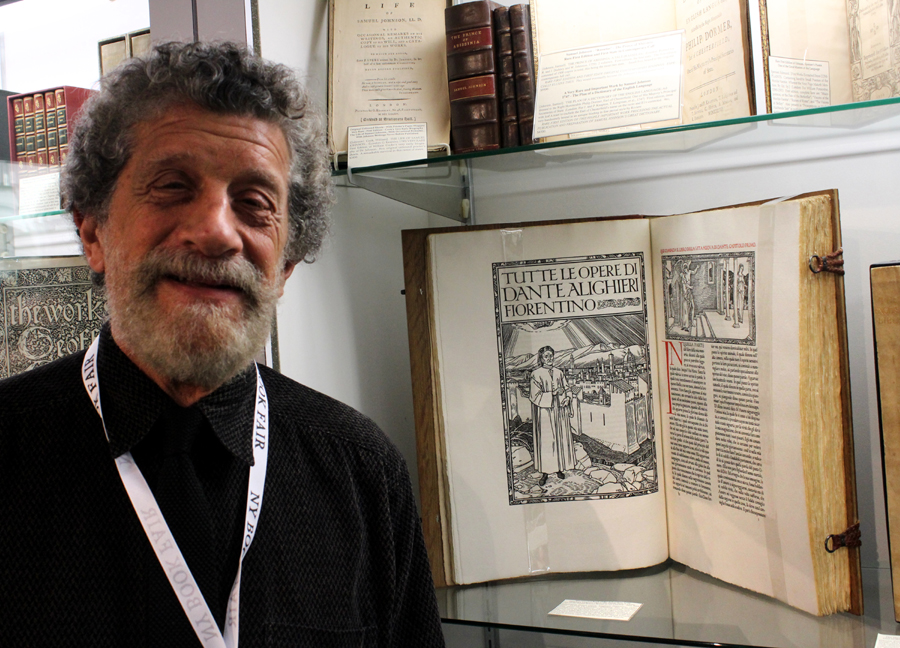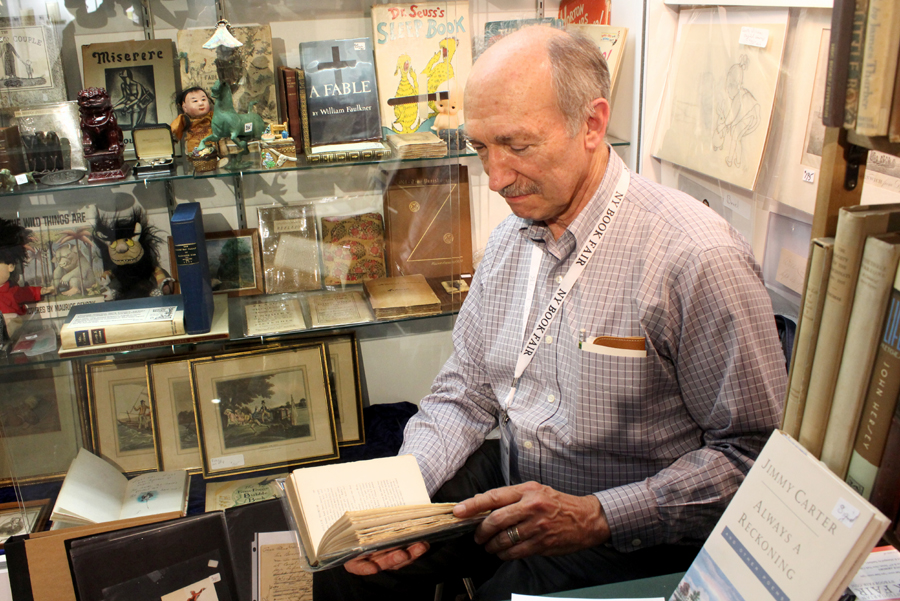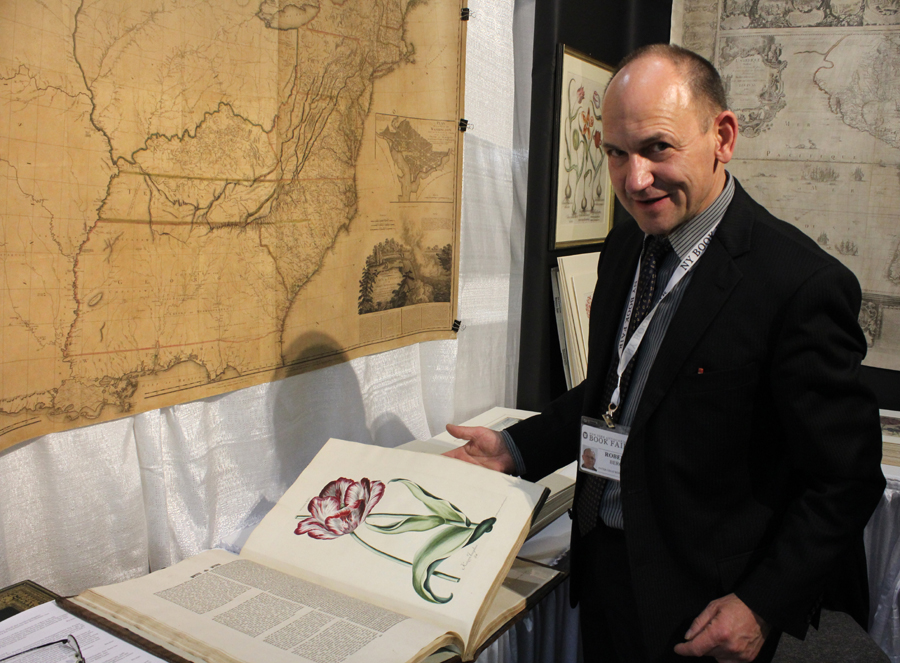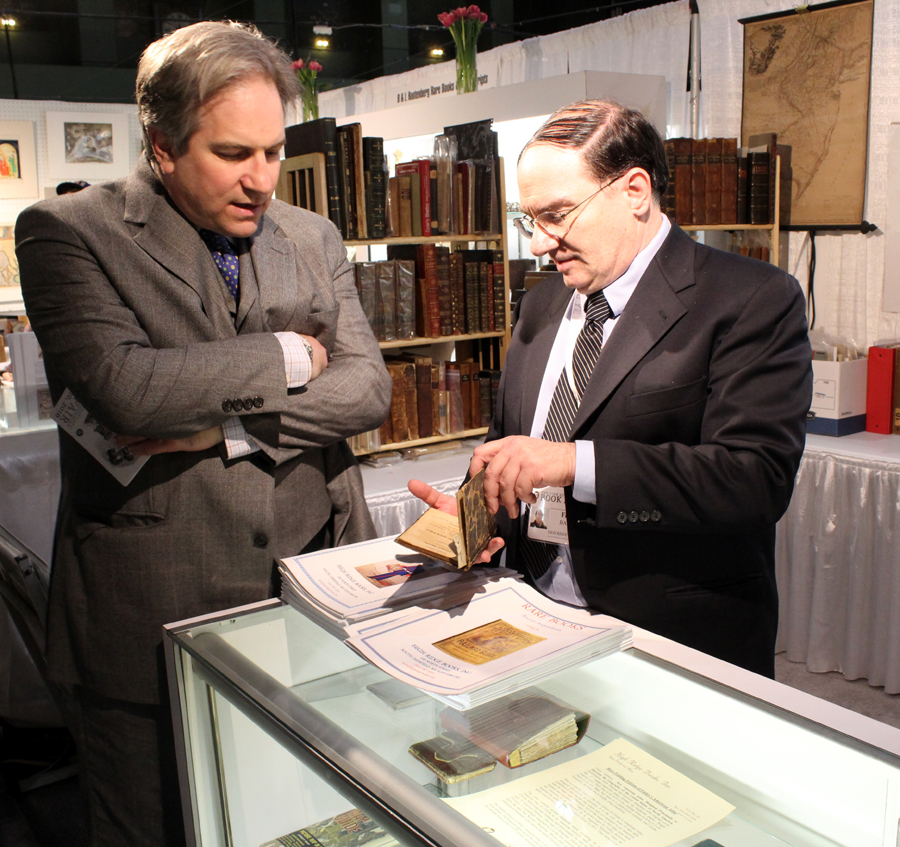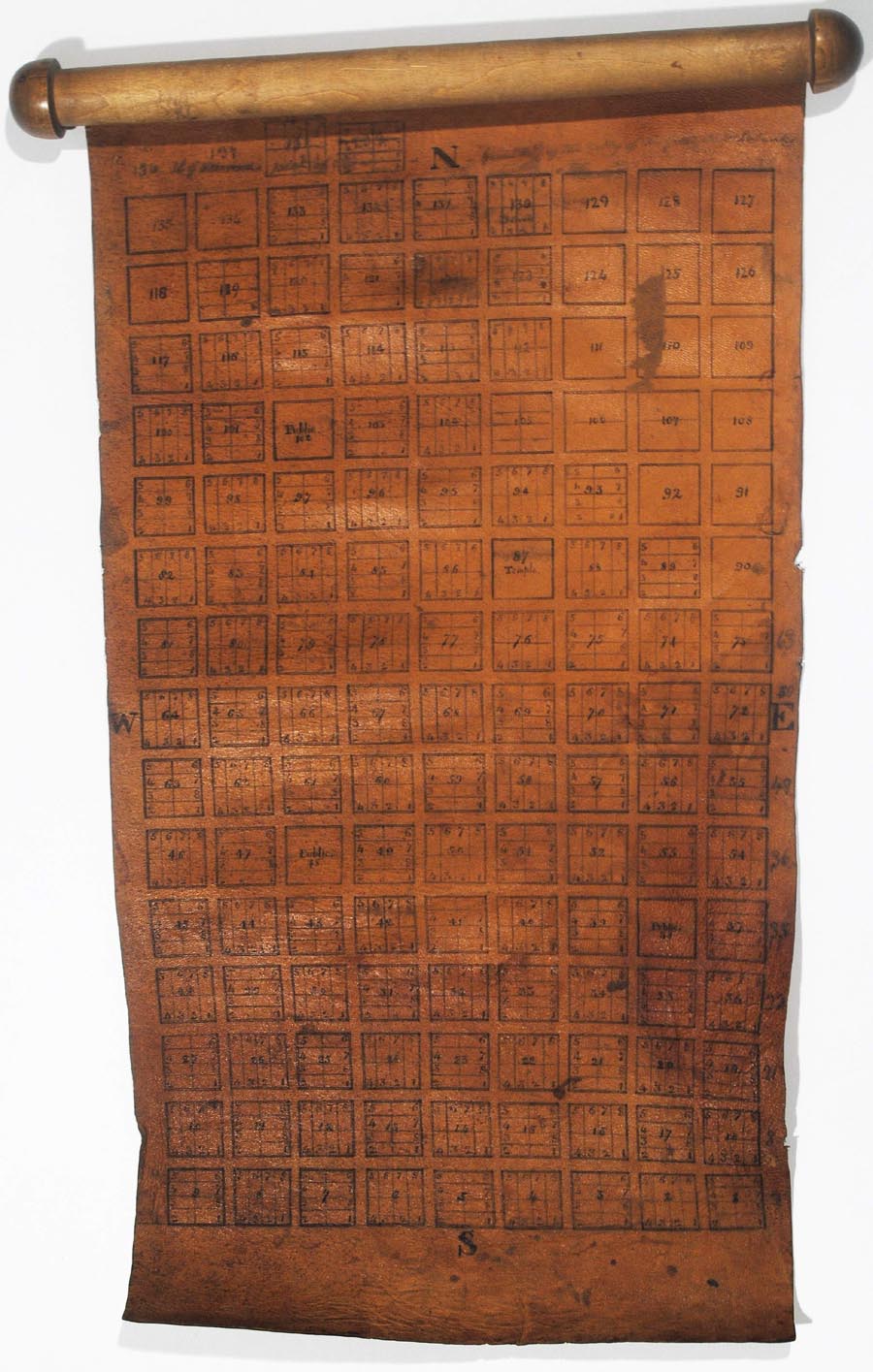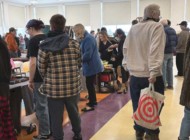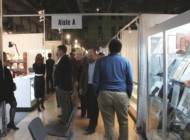Gate Up 25 Percent Over Last Year’s Event,
Says Promoter Sanford Smith
Review and Photos by W.A. Demers
NEW YORK CITY — Featuring more than 200 international dealers of rare books, maps, illuminated manuscripts, photographs, ephemera and singular items of historical interest, the New York Antiquarian Book Fair returned, perhaps one last time, to the Park Avenue Armory April 7–10. Produced by Sanford L. Smith + Associates, the fair is sponsored by the Antiquarian Booksellers’ Association of America and its parent organization, the International League of Antiquarian Booksellers.
For more than 25 years, this fair has been considered one of the finest in the world. Said book dealer Peter Kraus of Ursus Rare Books, “It’s the only book fair in the world that continues to attract world-class dealers, and, accordingly, people come to it from all over the world.” What they find are books in every conceivable genre and subject, and even unexpected items, like a ballet slipper worn by Anna Pavlova; a promotional poster for “Leaves of Grass” designed by Walt Whitman; an original first pressing of “Strange Fruit” inscribed by Billie Holiday; a limited edition volume of Basquiat’s drawings, signed by the artist; a carved “Miles to Go Before I sleep” walking stick from American poet Robert Frost’s personal collection; and the original manuscript map of Salt Lake City on a scroll.
Preview for the fair drew a large and enthusiastic crowd of serious collectors on April 7, offering cocktails and a sneak peek at the amazing amount of books, ephemera, maps and photos assembled here. Among those at preview were Jack Somer of Greenwich, Conn., a collector of antique maps, and Eugene Flamm, a neurosurgery professor and collector of medical rarities. The show ran Friday, Saturday and Sunday as well. “The gate was up 25 percent over last year,” said Sanford Smith, who manages the show and has done so for more than 25 years. “I attribute that to changes we made in advertising and expanding our presence on social media, which brought in many more young people.”
Titus Boeder of Maggs Bros, Inc, London, was showing a sizable display of Jesuitica in the form of a private collection of Sino European imprints of the Seventeenth and Eighteenth Century. Comparing the 30 prints, most of which were written and printed by Jesuits in China, Boeder compared them to a “vase of black tulips” — the black tulip signifying a “gem, in terms of rarity, condition, association and provenance.” “I thought that the fair was very well attended, much better than last year,” observed Boeder. “The organization seemed flawless — a well-oiled machine — I didn’t hear of any complaints. The venue is still the best in New York City, and I hope it will continue to be held there for many years to come.”
Unfortunately, that may not be the case.
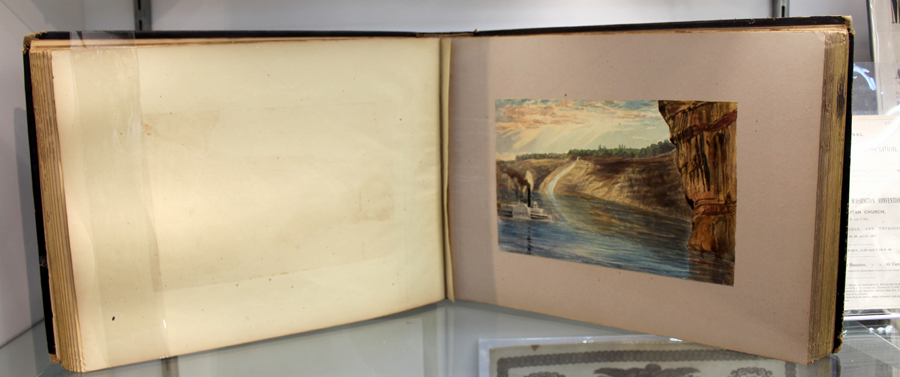
A rare and lavish album of striking watercolor views of Upper Peninsula, Michigan, 1865, by the founder of the American Watercolor Society, A.L. Rawson. James Arsenault & Company, Arrowsic, Maine.
Earlier this year, Smith told Antiques and The Arts Weekly, “From the very beginning, it has been the conservancy’s goal that the Park Avenue Armory would become a performing arts center. Whether or not they maintain a schedule of art and antiques shows after 2016 is something I don’t believe the conservancy knows at this point. It depends on their programming.” Smith has operated three other shows at the armory: the ADAA Art Show in March, the IFPDA Print Fair in November and the Salon of Art + Design, also in November. “I don’t have an answer yet about next year’s book fair,” said Smith. “I’m still waiting to hear from the armory.”
Leading up to the show, there was much buzz about a rare Alexander Hamilton “spy map” that was being brought by Barry Ruderman of Barry Lawrence Ruderman Antique Maps, La Jolla, Calif. That may have stemmed from the current popularity of Hamilton, the Broadway musical, but in its own right the recent find, an unprepossessing manuscript map of the lower Mississippi River that had been specially prepared for Hamilton at the time of the Louisiana purchase, also known as The “McGrudar Chart,” is of exceptional historical importance. Although mentioned in Hamilton’s papers, the 1803 chart was presumed lost until its chance rediscovery in early 2016.
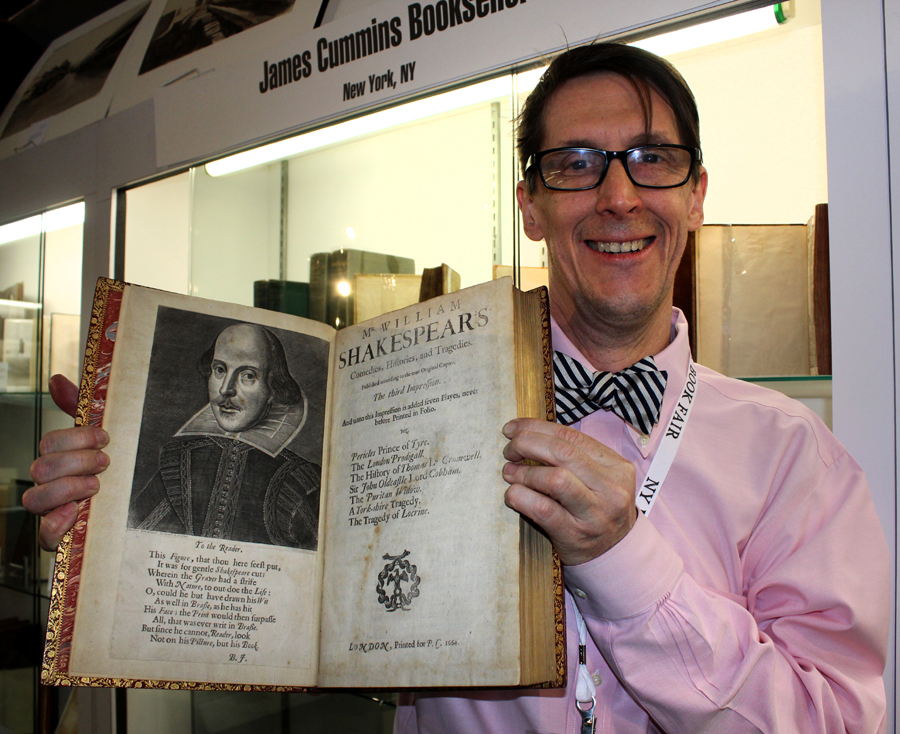
With the 400th anniversary of William Shakespeare’s death in 2016, works by the bard were plentiful at the fair. Here, Henry Wessels of James Cummins Bookseller, New York City, holds up a rare third folio from 1664, London, of Shakespeare’s plays, generally regarded as the rarest of the Seventeenth Century folio editions.
It covers approximately 350 miles from Natchez to New Orleans, and was an attempt by Hamilton to gain information and advantage with respect to the acquisition of Louisiana from Napoleon and subsequent occupation by the Americans. That pursuit pitted Hamilton against US President Thomas Jefferson and his agents. During this time, Jefferson’s men produced some of the best known of all American maps — including maps by Lewis and Clark, King, Dunbar and Pike — while the “McGrudar Chart” is the only extant product of Hamilton’s parallel efforts. The map was stickered $195,000.
“I enjoyed the show,” Ruderman said afterward. “New York is always great fun. We were fortunate to sell some fantastic material, including our Seventeenth Century Wall Map of the World and several fine Revolutionary War maps, but we were also excited to see that there was tremendous interest in the Twentieth Century propaganda, advertising and fantasy maps, which is definitely the hottest trend at the moment with both collectors and institutions.”
Ruderman added that he enjoyed seeing the reactions to the Alexander Hamilton Spy Map. “That Hamilton was dispatching spies to the South in competition with Thomas Jefferson — President Thomas Jefferson! — is unimaginably bold,” he said.
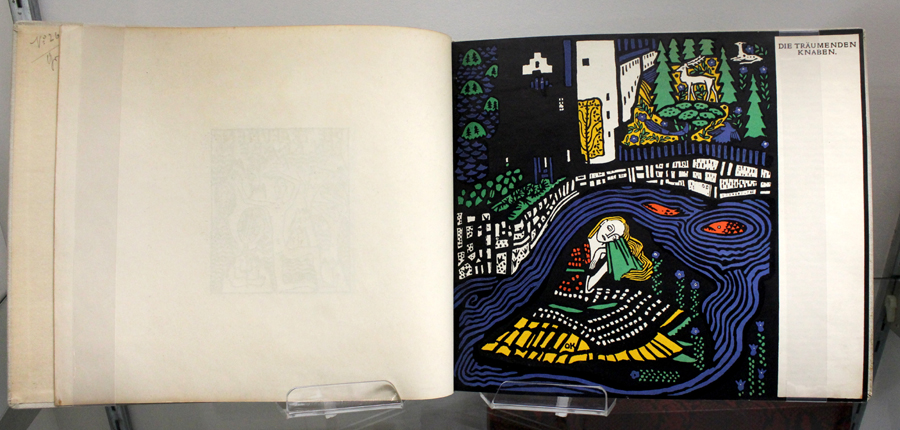
A first and only edition of Oskar Kokoschka’s “Die Träumenden Knaben,” 1908, Vienna Werkestätte, at Ursus Books, New York City. “I felt that the fair was a success, and everyone I talked to seemed to feel the same way,” said owner Peter Kraus. “There were plenty of librarians present, and I myself made three institutional sales. I also had a good sale to one collector and my most expensive book is on hold for a library.”
From the world of early American history to the fun and whimsy of children’s literature, the fair also provides much in the way of the latter, in particular a well-stocked showcase at Aleph-Bet Books, Inc, Pound Ridge, N.Y. Co-owners Helen and Marc Younger have been book dealers since 1978 and have been dealers at this show since 1983. “It’s the best show we do,” said Helen. “We were very pleased with it. The crowd seemed to be much larger than in recent years. Having been in business for so long, a big challenge is meeting new collectors. We always meet a few new people each year at this fair, but this year not only did we meet an unusually high number of new contacts but they purchased books as well. Since we don’t have an open shop, it was also great to see our existing customers in person.”
Near the show’s entrance on opening night, a trio of dealers were gathered around a table intently examining a fresh arrival — a portfolio of original prints by the Nineteenth Century English father of photographic studies of motion Eadweard Muybridge. The portfolio contained 200 of the 781 original prints attributed to Muybridge and is jointly owned by two of the dealers seen examining it — Donald A. Heald of New York City and Bill Reese of the William Reese Company, New Haven, Conn., who said they had purchased the collection, valued at $350,000, privately.
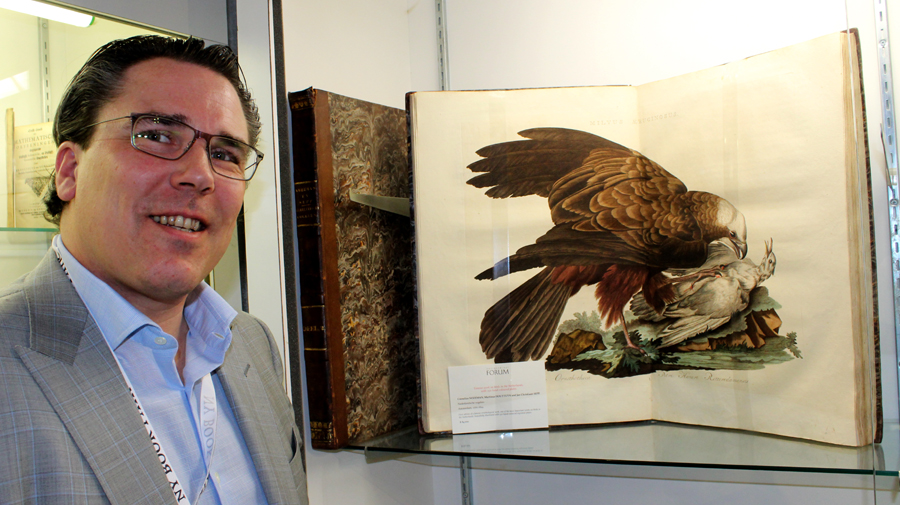
“The New York book fair is always the most interesting,” said Laurens Hesselink of Antiquariat Forum, Utrecht, The Netherlands, shown here with a first edition of a famous work on the birds of the Netherlands, Amsterdam, 1770–1829, with 250 hand colored plates.
Reese had his own rarity on view in his booth at the show, a small volume he described as “the first book printed in New York.” Titled Truth Advanced in the Correction of Many Gross & Hurtful Errors, the book by George Keith (1638/39–1716) was printed in 1694 and outlined the Scottish missionary’s growing disagreement with his Quaker fellow believers, who he believed had strayed too far from orthodox Christianity.
“It was a very busy event for us, and we’re still sorting out the results,” said Reese afterwards. “We had an excellent fair, the second best we’ve ever done, and I heard many of my colleagues commenting very favorably on their sales. My overall impression, therefore, is that it was a very good result for most of the exhibitors. Sandy Smith has managed the fair for 28 years now, and I can’t speak too highly of the professionalism and attention of him and his staff — we’re lucky to be able to work with them. Attendance was also excellent. At one point the armory said we were at capacity for people allowed in. It was what you might call perfect ‘fair weather’: not nice enough for people to want to go do something else, but not so nasty that they stayed home.”

For the book spine of Le morte d’Athur, no artist would do except the exceptional Aubrey Beardsley. The Kelmscott Bookshop, Baltimore
Reese added that he sold Increase Mather’s copy of the Cambridge Platform of Church-Discipline, 1653, for $125,000; Captain John Smith’s Description of New England, 1616, for $125,000 and more than 40 items overall.
Susannah Horrom, manager of the Kelmscott Bookshop, based in Baltimore, observed that most of the firm’s sales this year were to other dealers. “This was unusual for us as most of our sales at both book fairs and at our shop are to private collectors and institutions,” she said. “The fair is typically our best show of the year. This year the crowds — and buying — seemed to be the best for us on Thursday during the preview and on Friday. Sunday was the slowest day regarding both crowds and sales; however, we were surprised to learn that the owner of the venue denied entry into the building during the afternoon as he deemed the building to be at capacity. A line quickly formed and apparently some would-be fairgoers became very irritated, especially those who had left to use the bathroom on the lower level of the building, and then were told to wait in line. A young lady who visited our booth told us that she had witnessed an elderly man with a cane attack a security guard in order to gain entry! She said he was eventually subdued and escorted out of the building.”
Smith told Antiques and The Arts Weekly that the problem stemmed from a mistake that was made in the creation and review of the temporary certificate of occupancy that all shows must submit prior to an event. “I take responsibility for that. It’s the first time it has happened in 28 years and will not happen again.”
Sales for the Kelmscott Bookshop included one of two original albumen photographs by Julia Margaret Cameron, one of the most important and best-known early woman photographers, according to Horrom. “Another notable sale was one of my favorite books — Beowulf — printed by the Kelmscott Press — our namesake — in 1895.”
If you are wondering what a ballet slipper was doing at an antiquarian book fair, you may be unaware of Schubertiade, a Newton, Mass.-based firm that specializes in antiquarian music, books and autographs, as well as art and ephemera related to the performing arts. Thus, a boxed presentation of Anna Pavlova’s (1881–1931) pointe shoe with provenance from a dancer in the Russian prima ballerina’s ensemble. Pavlova’s feet were extremely rigid, so she was known for strengthening her pointe shoe by adding a piece of hard wood on the soles for support.
“As usual, it was an exciting fair, certainly the highlight of all the fairs at which we exhibit each year,” said the firm’s Gabe Boyers. “We rarely had fewer than five or six people in our booth from opening on Thursday through close on Sunday, and enjoyed enormously the many opportunities to chat about the items we’d brought with the sophisticated buyers, both private and institutional, who were in attendance. Of the pieces we were featuring at our booth, there was a great deal of attention particularly on Anna Pavlova’s pointe shoe, autograph music in the hand of Beethoven, an Andy Warhol ‘Souper’ Dress, a poster signed by Warhol and Basquiat, an Oscar Wilde photograph signed in New York and a Thomas Edison archive about the development of the record disc.”
Boyers added that a number of people also commented about his firm’s African Americana display, which included a rare 1960s “Black is Beautiful” hat from the estate of a former Black Panther, signed items from Nina Simone, Billie Holiday, Martin Luther King, James Baldwin and others, and a rare Nineteenth Century painting of St Benedict of Palermo, “Black America’s Patron Saint.”
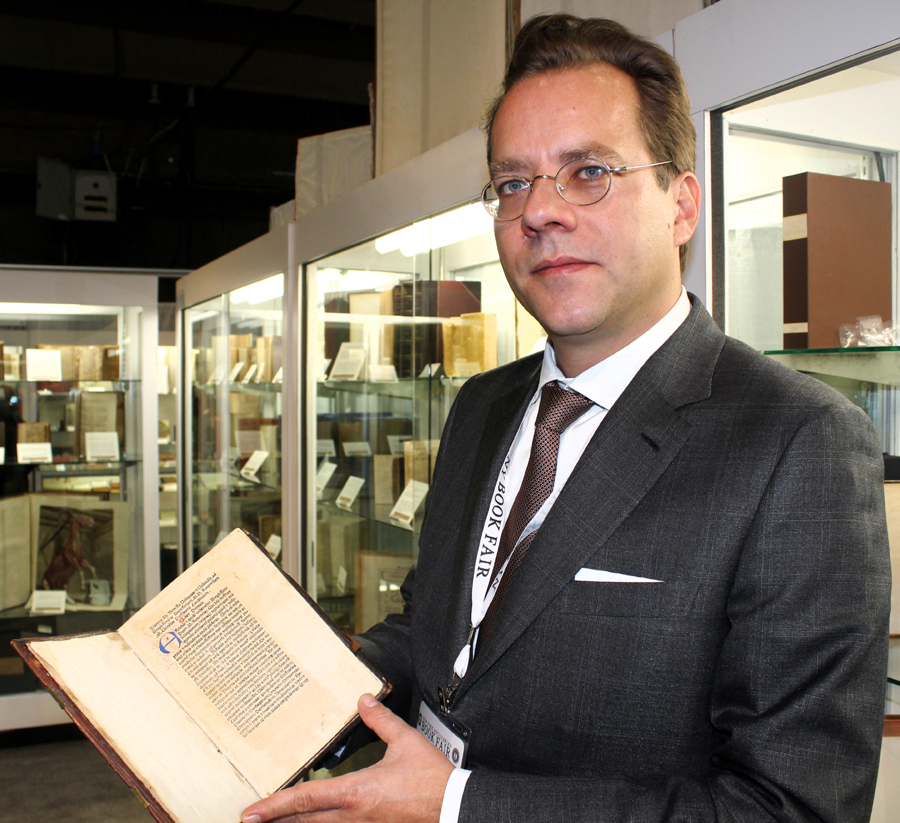
Hugo Wetscherek of Antiquariat Inlibris, Vienna, Austria, opens up the first printed book on food and drink, from 1480, a discussion of ginger, rice, cinnamon, saffron, cloves and other spices, indicating an already robust East-West commercial relationship in the mid-Fifteenth Century.
A highlight at Antiquariat Inlibris, Vienna, Austria, was what David Rueger of the firm described as the first printed book on food and drink, from 1480. “All in all, definitely one of the more enjoyable fairs in recent memory,” he said, “and probably the busiest we’ve experienced in the last few years. We made a few small sales, with quite a few larger things on reserve pending confirmation. The buying was also heavy — both at the fair and in the auctions clustered around the fair — and we needed a whole extra trunk to ship everything back to Austria. The most exceptional purchase was probably a suite of 13 gigantic engraved plates depicting Chinese military battles, printed in China, circa 1690, and a highly unusual and early example of engraved illustration in that country.”
For additional information, www.nyantiquarianbookfair.com or 212-777-5218.
Gallery

